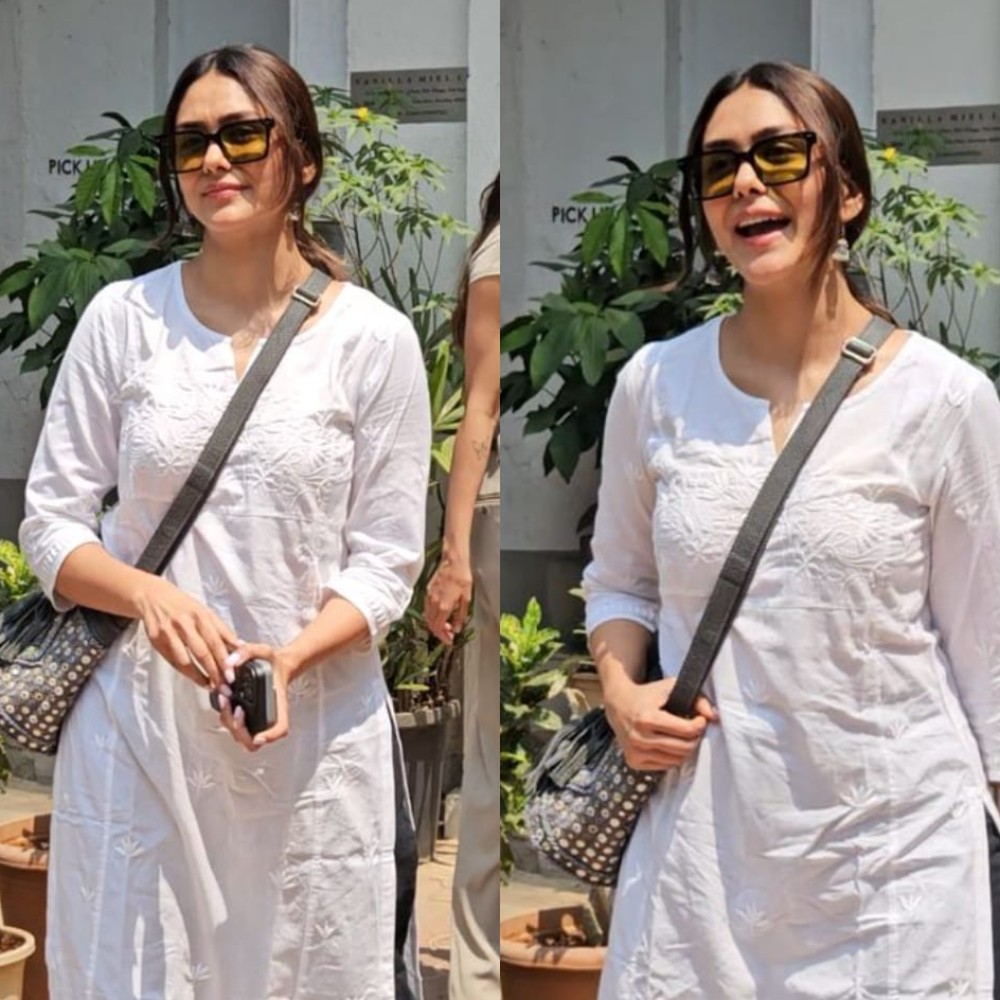Half Moon Pose: Mastering the Art of Balancing And Stretching
Experience tranquility and fiery strength with the Half Moon Pose. This yoga posture offers calmness and intensity, refining your balance and flexibility in one move.
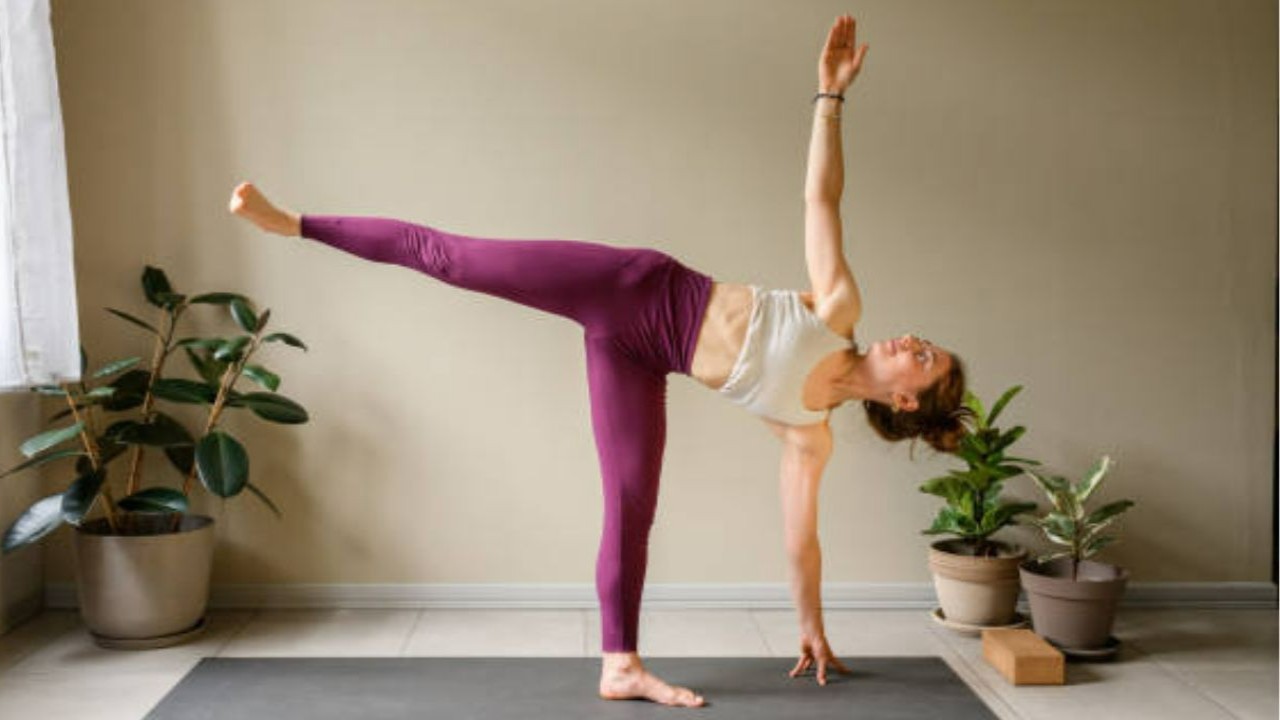
Initiating a yoga journey often brings one face-to-face with the dynamic equilibrium of ardor and peace. Ardha Chandrasana, prominently known as Half Moon Pose, emerges as a striking embodiment of this concept. This pose requires practitioners to channel energies reminiscent of the moon's calming coolness and the sun's fiery intensity. The stability and stretch in this pose mirror life’s own dance of balance.
Our contributor Bayu Prihandito, Life Coach, and RYT 200 Yoga Teacher, says, “If you are a beginner and wondering if previous experience is required to perform Half Moon Pose, then it isn’t the case. Beginners should always start with some support, like a wall or a block, to maintain proper balance and avoid the risk of injury.”
Losing balance and falling isn't a failure but an invitation to refocus and reconnect. The balancing act in Half Moon asana is a reflection of the daily pursuit to find stability amidst chaos. The name itself, Ardha Chandrasana, where 'ardha' means half and 'chandra' translates to the brilliant moon, eloquently captures the essence of this transformative pose.
In the practice of Half Moon yoga, one leg firmly grounds you while the other extends as if reaching for the celestial. Simultaneously, one arm provides stability, akin to the comforting coolness of the moon, while the opposite arm stretches skyward, representing the sun's fierce glow. This powerful dichotomy translates into a posture that works on rectifying postural imbalances, especially for those with tight chests or hips.
How to Do Half Moon Pose: A Step-by-Step Guide
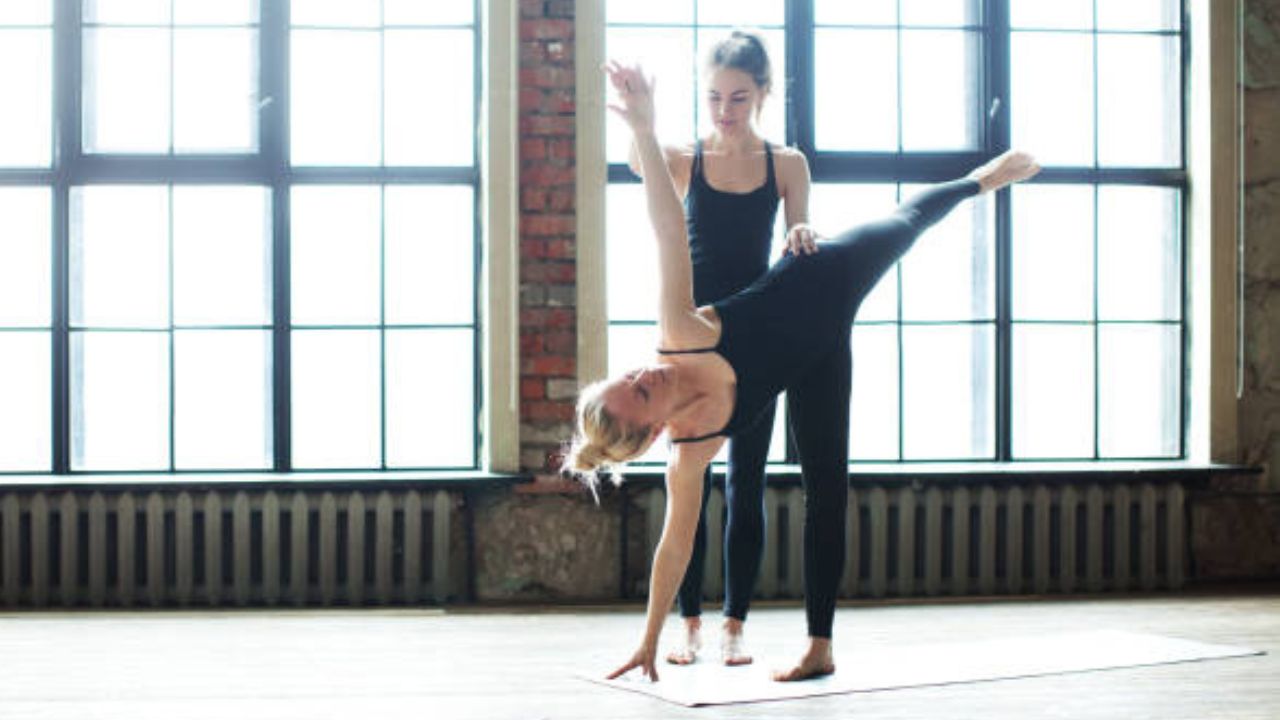
Ardha Chandrasana, commonly known as Half Moon Pose, is a balancing pose where the body mimics the serene beauty of a full moon suspended in the night sky. In this asana, one leg bears the body weight while the opposite leg extends parallel to the floor. One hand grounds you by touching the floor, and the other hand reaches skyward. The challenge is to keep all limbs in the same plane without tipping, ensuring steady balance and alignment.
Steps to Perform Half Moon Pose
- Begin in Utthita Trikonasana and put your left foot forward. Utthita Trikonasana, or Extended Triangle Pose, is a heart-opening expansion of the chest that stretches the hamstrings and back muscles.
- Place your right hand on your hip muscles.
- Now, move your head and place your gaze on the floor.
- Try bending your front leg and moving your weight on your front foot.
- Reach your front hand slightly forward and place it on the mat or a block beneath your front shoulder. Press down through your fingers for stability.
- Lift your back leg and keep your thigh in a parallel position on the floor.
- Turn your chest gradually to the right, twisting your torso and hips. Extend your top hand to the ceiling.
- Keep your gaze on the floor or gently bring it to your top hand. Ensure a slight bend in your standing leg to avoid hyperextension.
- Return gently to the Extended Triangle.
Standing Half Moon pose requires a careful alignment of limbs and a steady focus on the breath. By beginning with the foundational Utthita Trikonasana and gracefully transitioning through each step, practitioners can find balance and poise in the Half Moon Pose.
6 Benefits of Half Moon Pose
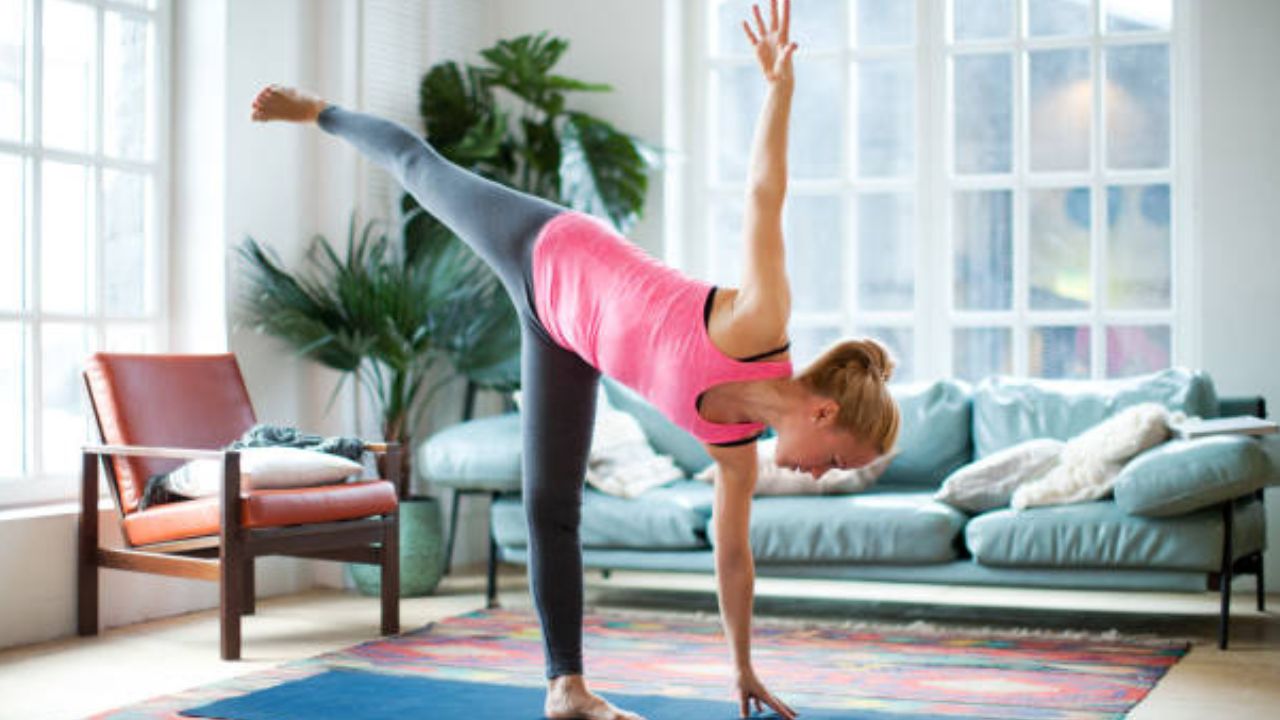
In Ardha Chandrasana, the practitioner creates the semblance of a half moon by extending the torso and lifting a leg, each in different directions. It is an effective exercise that works on various parts of the body, offering injury prevention. Here are some of the most prominent benefits to gain from practicing the Half Moon pose:
1. May Help in Enhancing Body Posture
Ardha Chandrasana may necessitate body stretching, which can significantly enhance your posture. It proves to be particularly beneficial for individuals who spend prolonged hours sitting and may be grappling with poor posture (1).
2. May Aid in Improving Body Balance
The practice of taking deep breaths during this pose may calm the breathing muscles, enhancing the function of intercostal muscles. This leads to boosted energy levels and heightened focus on maintaining body balance.
3. May Contribute to Stretching the Body
This pose may stretch the hamstrings, calves, hips, and arms while opening up the chest and diaphragm, thus improving overall mobility (2).
4. May Alleviate Chronic Back and Neck Pain
The stretch and posture improvement provided by this pose can lead to alleviation of chronic back and neck pain, offering noticeable relief with regular practice.
5. May Strengthen Core Muscles
Regular practice of Ardha Chandrasana may strengthen core muscles and increase energy levels. Just maintain normal breathing and keep the core engaged throughout the exercise (3).
6. May Reduce Anxiety, Stress, and Depression
This pose may enhance blood circulation to the brain and ensure sufficient oxygen and nutrient supply. It may help you promote mental peace and reduce stress and depression (1).
Our contributor Bayu Prihandito, Life Coach, and RYT 200 Yoga Teacher, says, “With some modifications and careful alignment, Half Moon Pose can indeed be attempted even by those with mild spinal issues, but it should be avoided or approached cautiously if severe issues are present.” Ardha Chandrasana offers enhanced posture and body balance for mental well-being. So, all you need is to practice every day and attain perfection for your own good.
Beginners’ Tips for Those Trying Half Moon Pose for the First Time
In Ardha Chandrasana, or Half Moon Pose, beginners may find themselves seeking a few tips to ensure a smooth and beneficial practice. Here are some handy tips to help beginners find their balance and align their bodies gracefully in the Half Moon Pose:
- Beginners may find it challenging to touch the floor with their lower hand while maintaining balance in the Half Moon Pose. Using a block can provide the necessary support and stability.
- As you grow more comfortable and your balance improves, you can gradually lower the block to its middle and then its lowest height.
- Balancing can be tricky for beginners, so keeping your gaze straight ahead can help in maintaining stability.
- In case you find yourself side-bending excessively while balancing a half moon pose to reach the floor, place a block under your bottom hand to provide the right alignment without straining your body.
These beginner-friendly tips are designed to help ease into the pose and gradually build the strength and balance necessary for Ardha Chandrasana. By staying attentive to your body's needs and making use of props like blocks, you can effectively embrace and enjoy the benefits of this graceful pose.
Half Moon Pose Variations And Modifications
The Half Moon yoga pose is a dynamic pose that can be adjusted to suit practitioners of varying levels of expertise. Several modifications and variations can help in making this pose accessible and enjoyable. Here, we explore three such adaptations.
1. Half Moon Pose on a Chair
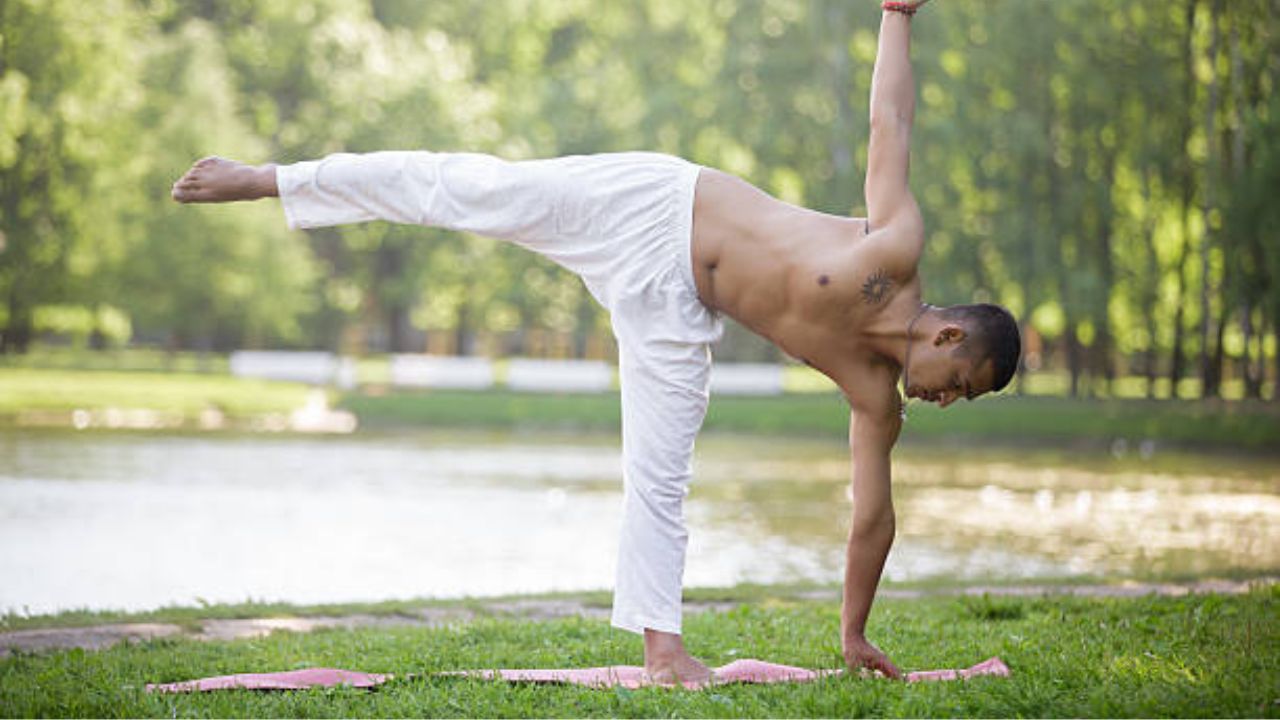
Practicing Ardha Chandrasana with a chair can alleviate pressure on the lower back.
Steps:
- Place your hand or forearm on the seat of a chair.
- Lift your leg up to a comfortable height.
- Extend your top hand to the ceiling or rest it on your hip.
- Choose to look down, straight ahead, or upwards.
2. Half Moon Pose with the Knee Down
This variation emphasizes strengthening while easing the balance aspect of the pose.
Steps:
- Start on the floor with one knee down.
- Extend the bottom shin straight behind you like a kickstand.
- Engage in the pose, focusing on muscle engagement rather than balance.
3. Half Moon Pose with a Chair and a Block
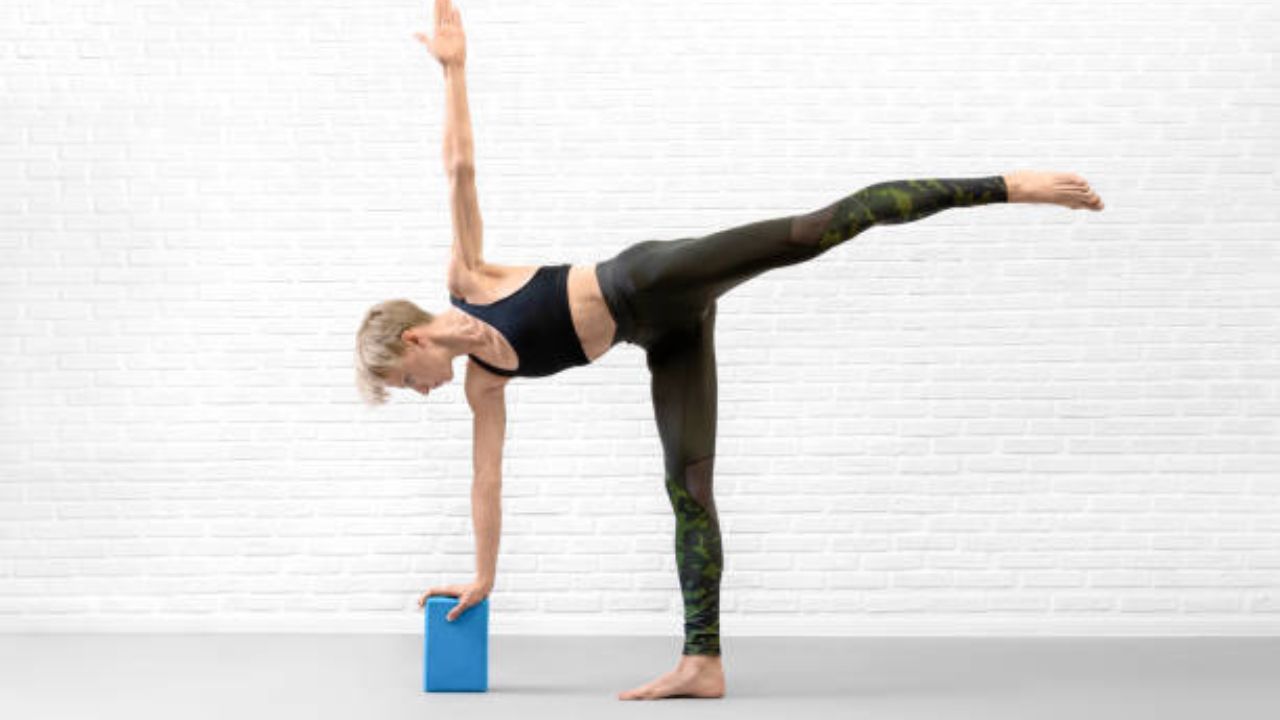
Combining the use of a chair and a block can provide additional support and comfort.
Steps:
- Raise your leg.
- Rest it on the back of the chair. You may put a blanket or towel for cushioning.
- Place your bottom hand on a block positioned directly beneath your shoulder.
- Engage in the pose, ensuring that both the chair and the block provide steady support.
These variations of Ardha Chandrasana ensure that practitioners can engage with the pose in a manner that suits their comfort level and physical capabilities.
Precautions to Consider While Performing the Half Moon Pose
Ardha Chandrasana, while beneficial, requires careful consideration of certain precautions for a safe practice.
- Excessive exertion should be avoided by elderly individuals while practicing this pose.
- It's advisable for women to refrain from this pose during menstruation and pregnancy.
- Individuals with high blood pressure, cardiovascular illnesses, stroke, and hernias should abstain from this pose.
- Each movement should be executed deliberately and without strain.
- The pose should be practiced 3 to 7 times, with beginners starting with two to three rounds.
- Children, aged at least eight years, may start practicing this pose.
- Those with knee injuries or ankle pain should approach Ardha Chandrasana with caution.
- Strictly adhere to instructions provided by doctors and yoga trainers.
Being mindful of these precautions ensures that practitioners can engage in Ardha Chandrasana yoga safely and effectively. A conscious approach guarantees the benefits of the pose while minimizing any potential risks.
Conclusion
Half Moon Pose weaves together the multifaceted benefits it brings to practitioners from all walks of life. Ardha Chandrasana, seamlessly integrates with sequences such as Chandra Namaskar, amplifying its potential to foster holistic well-being. The pose is not merely a physical exercise but a nurturing embrace for the mind, body, and soul. Students may find solace and control over aggression, while expectant mothers may find comfort and strength. Regular practice can lead to muscle fortification and a surge in confidence. While caution is advised for those with knee or ankle concerns, the benefits of this pose are indeed compelling.
Contributor: Bayu Prihandito, Certified Psychology Consultant, Life Coach, and RYT 200 Yoga Teacher, Founder - Lifearchitekture
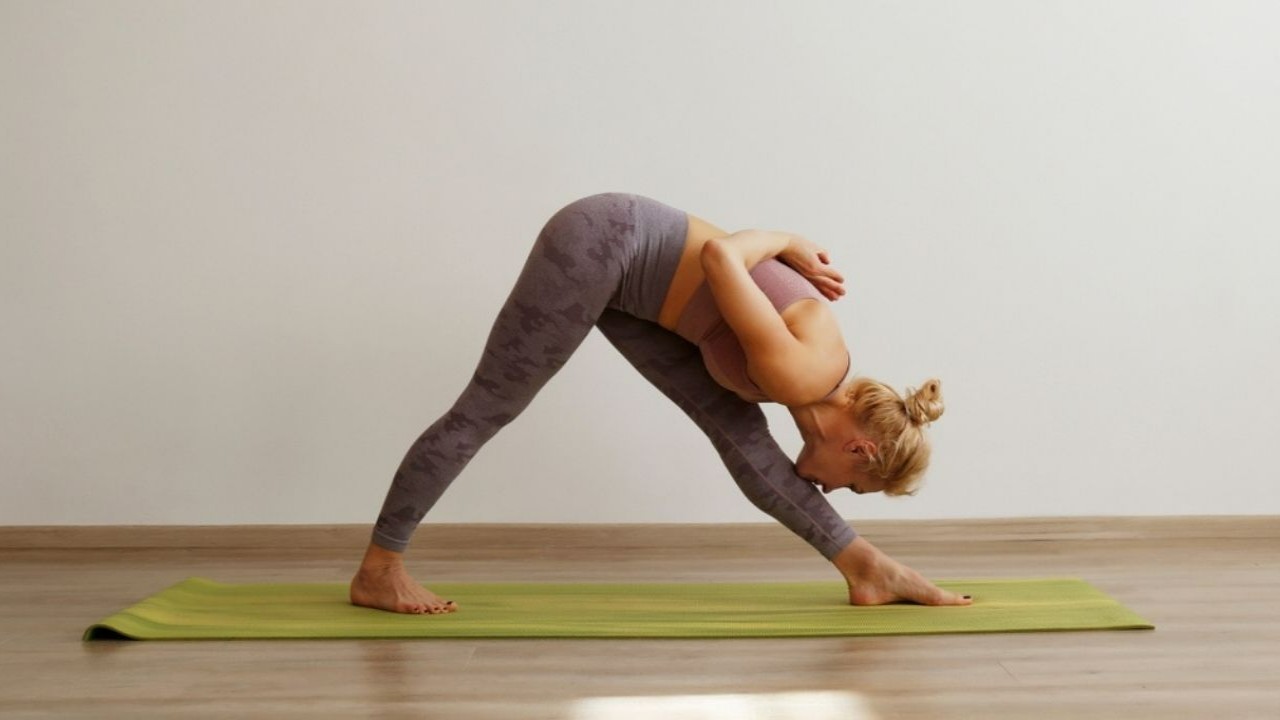
Pyramid Pose: How-to, Benefits, Tips And Precautions Explained





 JOIN OUR WHATSAPP CHANNEL
JOIN OUR WHATSAPP CHANNEL

























